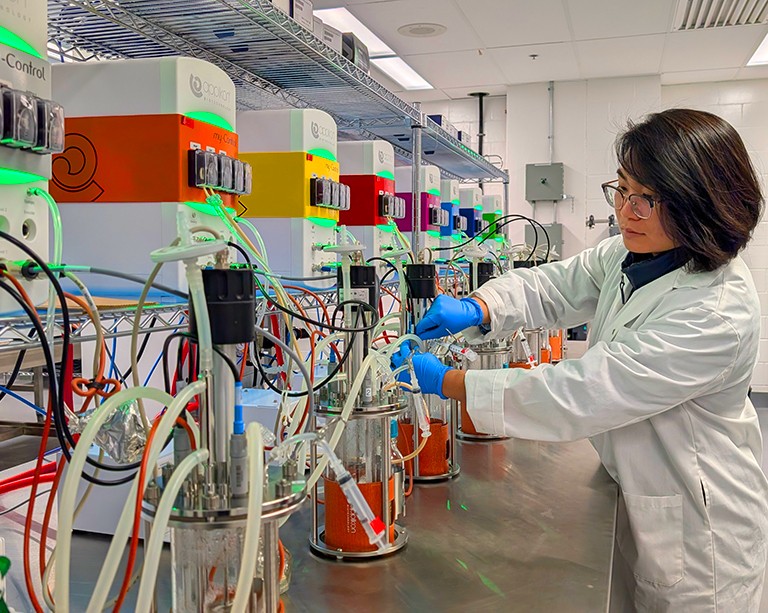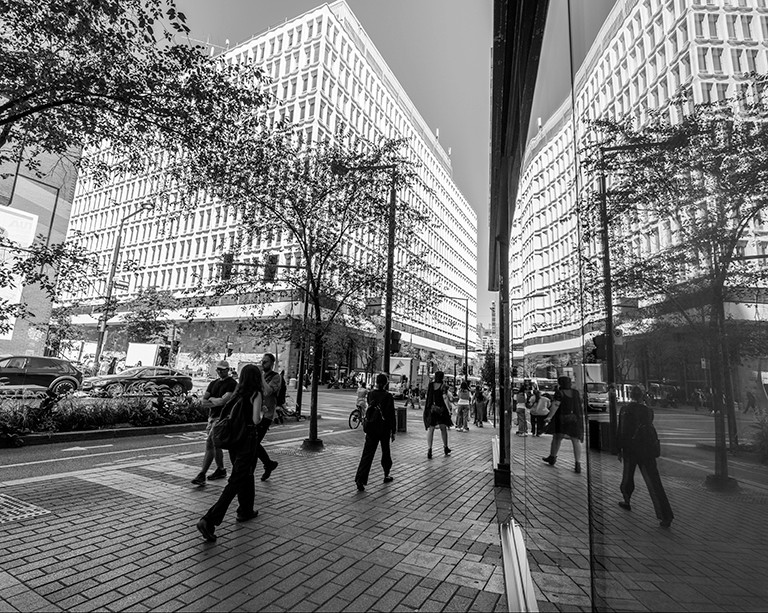Concordia researchers create faster way to trace how diseases spread indoors

Concordia researchers have developed a new method of monitoring and tracking how disease-causing particles, or pathogens, spread from one place to another. The tool could help contain future outbreaks of diseases like COVID-19.
Published in the journal Building and Environment, the method uses real-time camera- and sensor-based tracking of infected individuals, as well as algorithm-based air and pathogen dispersal models, to assess infection risk levels. The tool can also alert ventilation systems to optimize air flow and reduce lower the risk of infecting others.
“Our novel method greatly reduces the simulation time found in other studies, giving us a better estimation of whether a location that has been exposed to pathogens still poses a risk,” says the study’s lead author, PhD candidate Zeinab Deldoost.
She points out that most models only capture short bursts of airborne spread — under a minute — whereas theirs can keep simulating for much longer.
“If we know a person is sick, then this system helps us monitor them and find out the dimensional dispersion of the pathogen around them,” says co-author Fariborz Haghighat, a professor in the Department of Building, Civil and Environmental Engineering at the Gina Cody School of Engineering and Computer Science.
“A building equipped with sensors allows us to follow the infected people and estimate or track who has been in contact with that person.”
Simpler airflow calculations
The model’s efficiency lies in reducing the number of calculations it performs.
Instead of trying to estimate how a person’s movement affects airflow, the model treats the person as a massless moving emission source. This approach gives the model a consistent measure of airflow and allows it to study how a pathogen is dispersed in it from a moving source.
The researchers validated this approach by showing that a person’s physical presence only disrupts airflow briefly. After someone leaves a room, the airflow returns to normal in about 40 seconds, and the disturbance extends only about one metre around their path. The effect on pathogen dispersal over large areas and longer durations is therefore negligible.
This improved technique allows the model to simulate one second of dispersion, or the pattern of how particles spread in the air, in just 3.8 seconds on a standard laptop.
The researchers point out that this makes their system better suited for complex buildings with dynamic occupancy like hospitals. It also gives decision-makers the ability to make near real-time choices.
Co-author Fuzhan Nasiri, also a professor in the Department of Building, Civil and Environmental Engineering, believes the system could benefit future adoption of dispersion-response models in buildings.
“If we could use this simulation over an extended period under different scenarios, we could generate enough data to represent different patterns with respect to movement and dispersion,” he says. “That data set could then be used to train AI systems so that future users could avoid running complete simulations to establish the same results.”
This research was assisted with a Natural Sciences and Engineering Research Council of Canada Discovery Research Grant.
Read the cited article : "Real-time analysis of pathogen dispersion patterns resulting from a moving infectious person"




